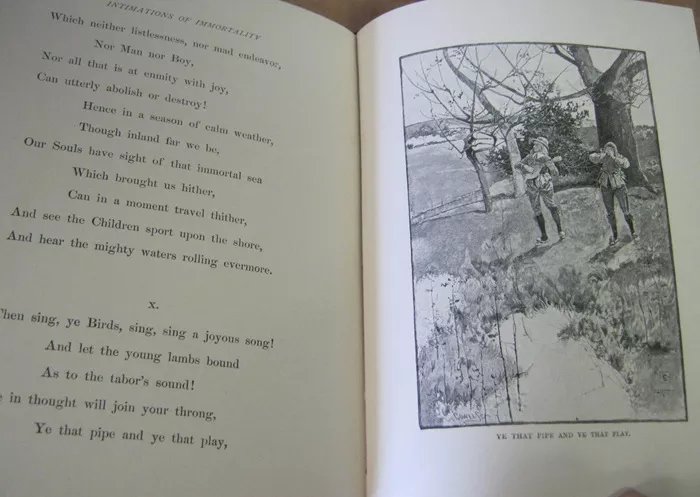Welcome to Poem of the Day – Ode: Intimations of Immortality from Recollections of Early Childhood by William Wordsworth
William Wordsworth’s Ode: Intimations of Immortality from Recollections of Early Childhood is one of the most famous and important poems of English Romanticism. Written in 1804, this ode explores themes of childhood, memory, nature, and the soul’s connection to immortality. The poem is both personal and philosophical, reflecting Wordsworth’s deep thoughts about life and the passage of time.
Ode: Intimations of Immortality from Recollections of Early Childhood Explanation
Background
Wordsworth was a key figure in the Romantic movement, which emphasized emotion, nature, and individual experience. In this poem, he reflects on how children seem to have a special connection to a spiritual world. He wonders why adults lose this bright sense of wonder as they grow older.
Structure and Style
The poem is an ode, meaning it is a formal, lyrical poem praising or contemplating a particular subject. It has eleven stanzas, each containing eight lines. The language is rich but clear, filled with beautiful images drawn from nature. Wordsworth’s style is thoughtful and emotional, aiming to connect with the reader’s own memories and feelings.
Summary and Explanation
Stanzas 1-4: The Loss of Childhood Joy
The poem begins with the speaker mourning the loss of the joyful, magical vision of childhood. Wordsworth describes how the bright, shining light that filled his early years seems to fade as he grows older. This “light” represents a special spiritual awareness and closeness to nature.
He says that the natural world seemed more alive and full of meaning in childhood. Children see the world as pure and full of wonder. As people age, this sense of connection to nature and the divine becomes weaker.
Stanzas 5-8: The Idea of Immortality
Here, Wordsworth introduces the idea that children carry within them a hint of immortality. He suggests that before birth, souls live in a higher, divine realm. When they come to earth, children remember this spiritual world in a faint way, which is why they experience the world with such awe.
This “intimation” or suggestion of immortality gradually fades as the child grows and forgets their spiritual origins. But the memory of this connection never fully disappears.
Stanzas 9-11: Acceptance and Consolation
In the final part of the poem, Wordsworth accepts that growing up means losing some of that early brightness. However, he finds comfort in the thought that nature and the soul continue to connect in different ways. Though adults may lose some of their childlike wonder, they can still find joy and meaning through their experiences and memories.
The poem ends on a hopeful note, encouraging readers to remember the spiritual truths of childhood and to see life as part of a larger, eternal cycle.
Themes
Childhood and Memory: The poem deeply values the special qualities of childhood, especially the way children perceive the world.
Nature: Wordsworth often connects nature to the soul and the divine, showing it as a bridge between the physical and spiritual worlds.
Immortality and the Soul: The central idea is that human souls have a spiritual origin and hint at immortality, which influences how children see the world.
Loss and Hope: The poem balances sadness over the loss of childhood innocence with hope found in spiritual connection and memory.
Conclusion
Ode: Intimations of Immortality stands out because it combines personal reflection with universal questions about life, death, and the soul. Wordsworth’s belief that nature and childhood carry deep spiritual significance influenced many poets and readers. The poem encourages us to cherish our memories and stay connected to the wonder of the world.

